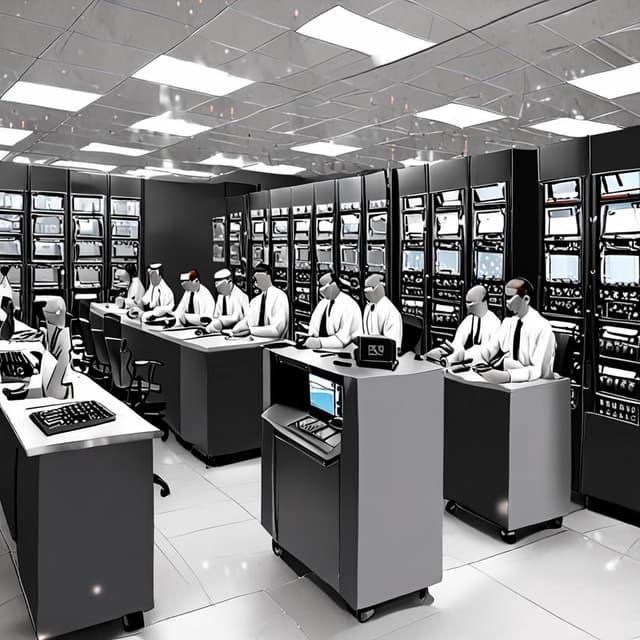
| Origins | 1930s in Europe, developed by pioneering researchers in countries like Germany and the United Kingdom |
| Early Use | Adopted by government agencies and scientific institutions during and after World War II |
| Significance | Remained vital component of modern IT infrastructure even as personal computers emerged |
| Prominent Applications | Space exploration • Weather forecasting • Cryptography • Business data processing |
A mainframe computer, or simply a "mainframe", is a large, powerful, and reliable computer designed for high-volume, mission-critical applications and workloads. These systems are characterized by their immense processing power, expansive data storage capabilities, and robust fault tolerance. Mainframes have been a critical component of computing infrastructure since their origins in the 1930s.
The origins of mainframe computing can be traced to research efforts in Germany and the United Kingdom during the 1930s. Pioneers like Konrad Zuse in Germany and Tommy Flowers in the UK developed some of the first general-purpose electronic computers, laying the groundwork for future mainframe systems.
These early mainframes were large, room-sized machines focused on scientific and government applications rather than commercial business use. They were quickly adopted by agencies like the German Armed Forces and the British Armed Forces for code-breaking, artillery calculations, and other military applications during World War II.
In the decades following the war, mainframe computers continued to grow in power and importance, particularly in the realm of scientific research. Mainframes played a pivotal role in fields like weather forecasting, space exploration, cryptography, and nuclear physics. Institutions and government agencies in Europe, the United States, and the Soviet Union used mainframes extensively for their computing needs.
As commercial applications grew, mainframes also became indispensable tools for large corporations and financial institutions to process vast amounts of data, handle complex business transactions, and maintain mission-critical systems. However, the development and widespread adoption of mainframes remained centered in Europe rather than being dominated by American companies like IBM as in our timeline.
While the rise of personal computers and microprocessors did eventually impact the mainframe industry, their emergence and proliferation happened at a slower pace in this alternate timeline. This allowed mainframe systems to maintain a more dominant position within the overall computing landscape.
Mainframes continued to evolve, incorporating new technologies like virtualization, cloud computing, and quantum computing. They remain essential for applications that require extreme reliability, security, and processing power, such as banking, insurance, healthcare, and government. Many of the world's largest organizations and most critical infrastructure still rely on mainframe computers as the backbone of their IT systems.
Though their prominence has shifted somewhat, mainframe computers have proven to be an enduring and adaptable technology, continuously playing a vital role in powering the modern digital world. Their history as pioneering European innovations has given them a distinct legacy compared to the more American-centric mainframe narrative of our own timeline.